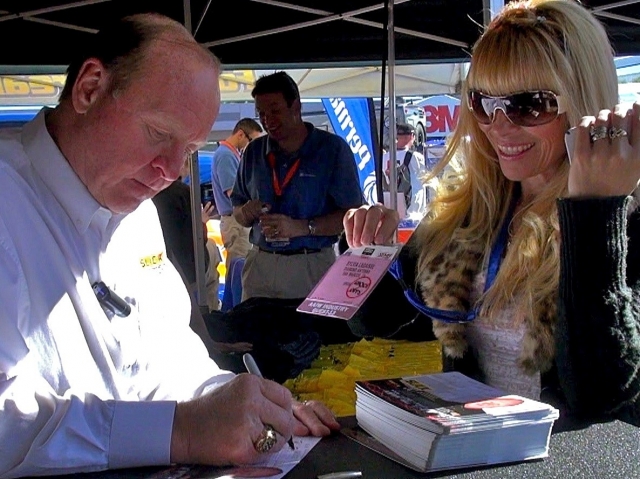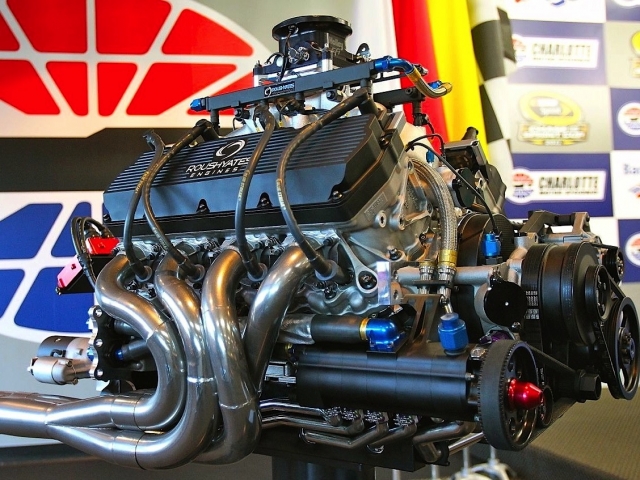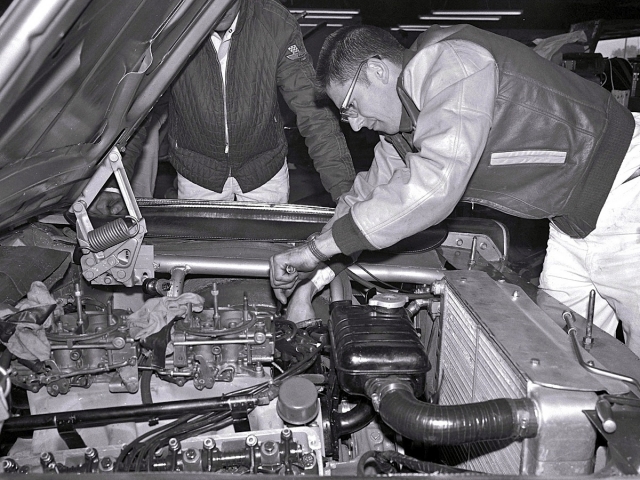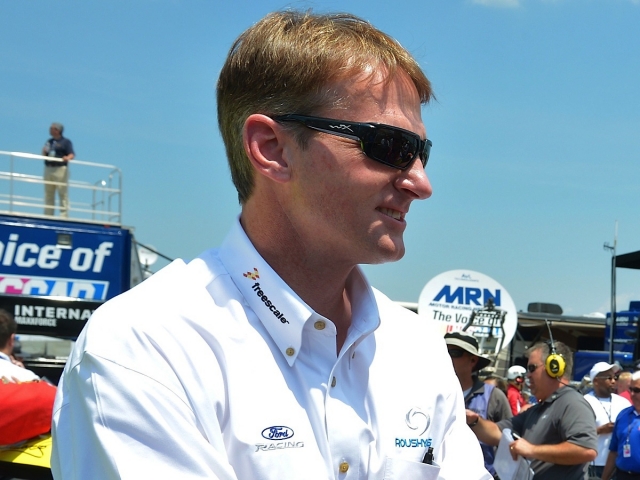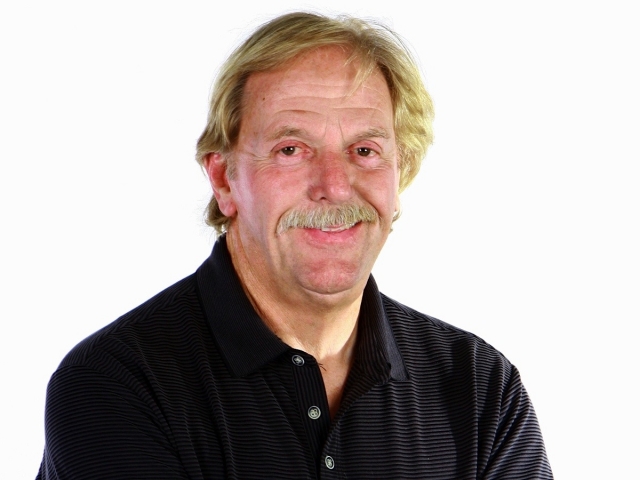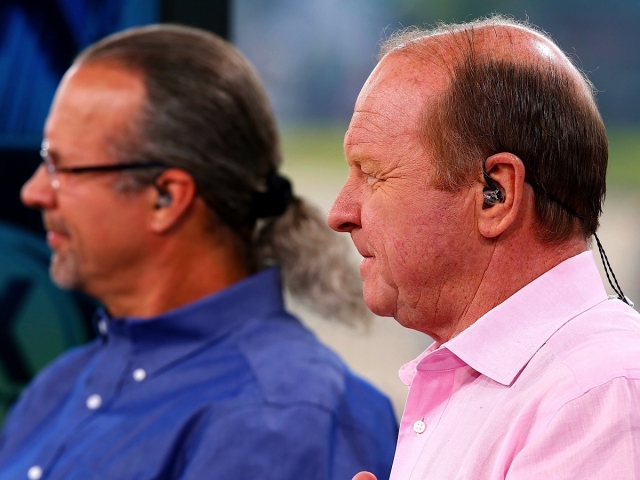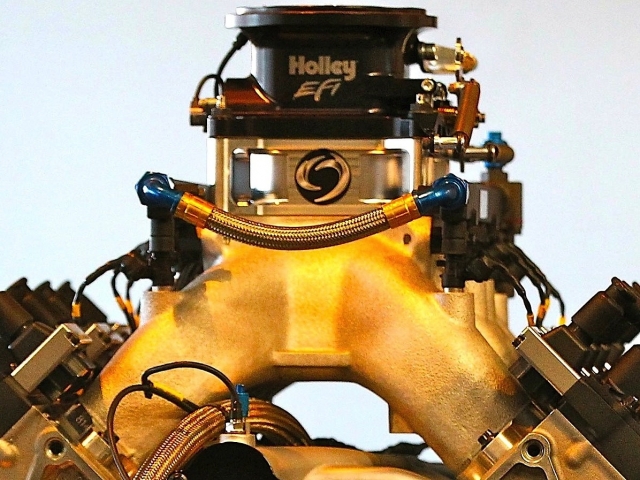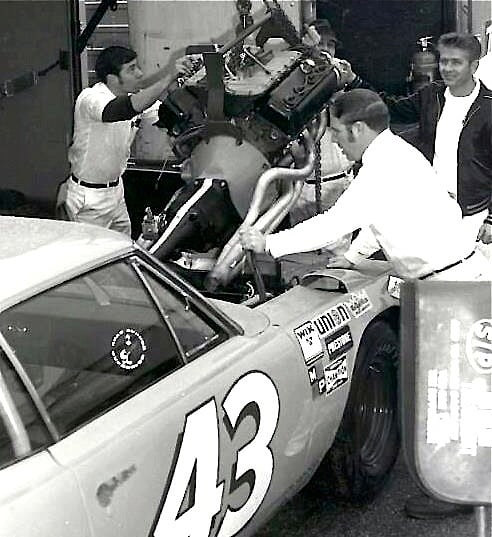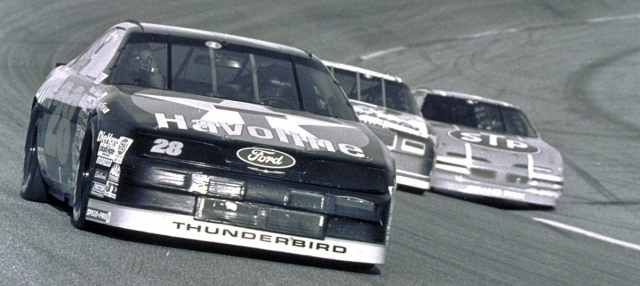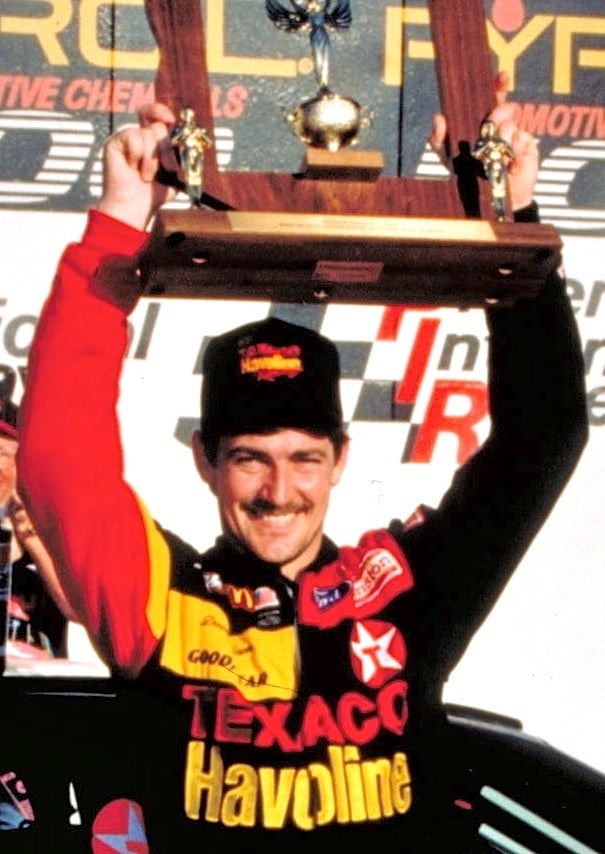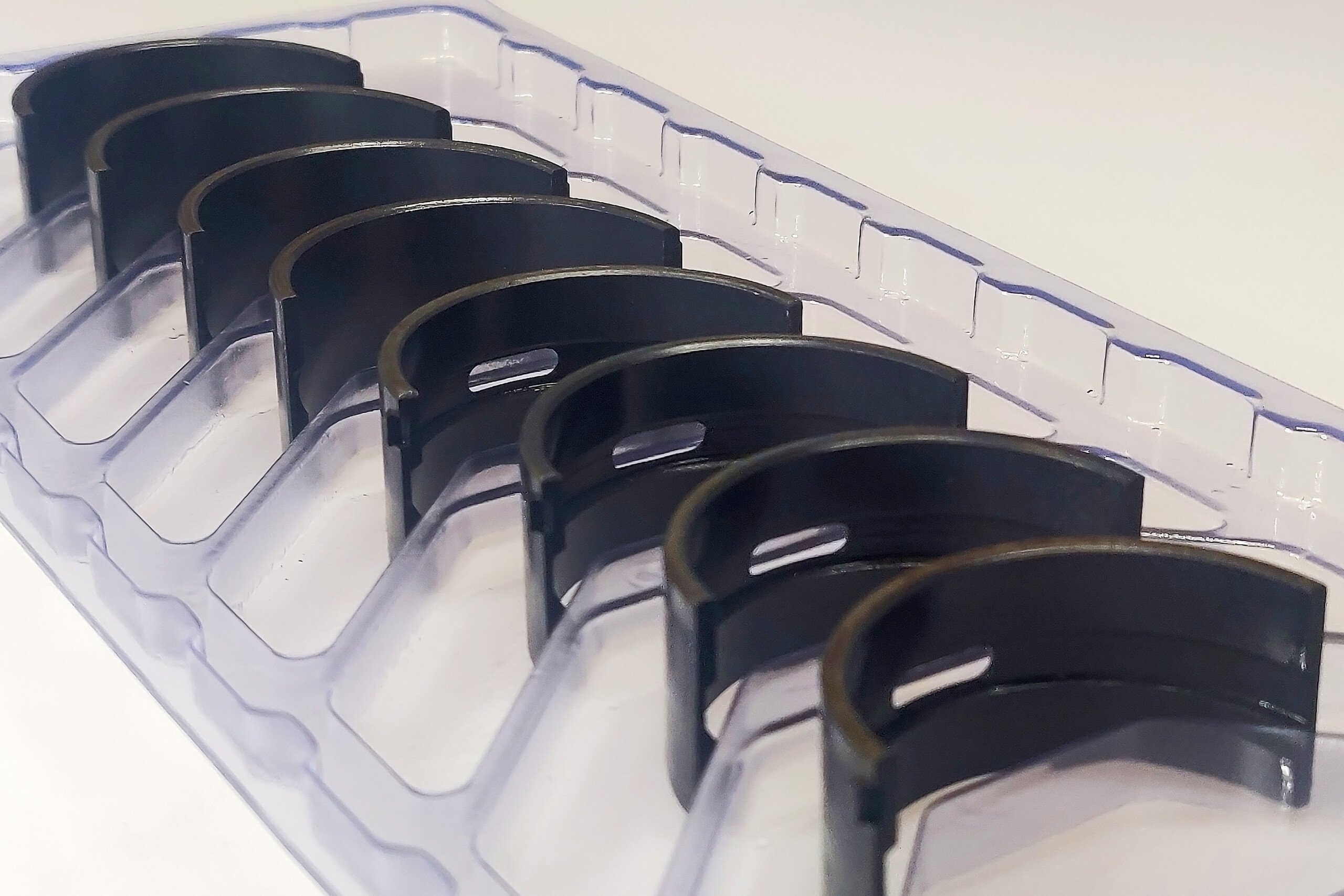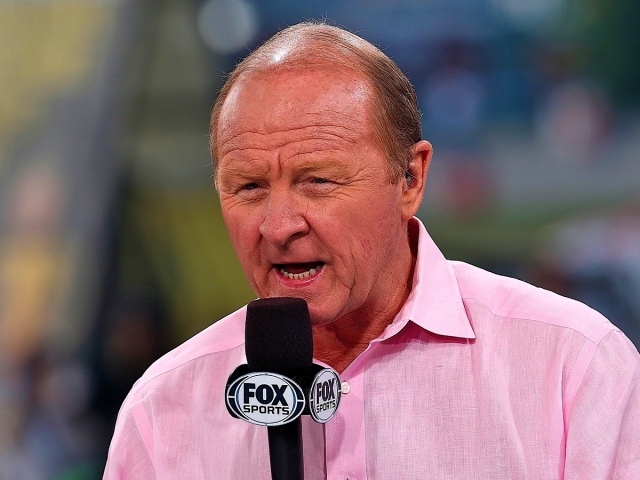 A veteran crew chief who guided Davey Allison and Dale Earnhardt to victories in the Daytona 500, Larry McReynolds is now a color analyst for Fox Sports’ NASCAR race coverage. While in the garage, McReynolds’ drivers won 23 races and captured 21 poles. From 457 starts, his teams finished in the Top 5 122 times and in the Top 10 209 times. EngineLabs caught up with McReynolds at the SEMA show where he was serving as a spokesperson for Slick 50.
A veteran crew chief who guided Davey Allison and Dale Earnhardt to victories in the Daytona 500, Larry McReynolds is now a color analyst for Fox Sports’ NASCAR race coverage. While in the garage, McReynolds’ drivers won 23 races and captured 21 poles. From 457 starts, his teams finished in the Top 5 122 times and in the Top 10 209 times. EngineLabs caught up with McReynolds at the SEMA show where he was serving as a spokesperson for Slick 50.
EngineLabs: What was it like working with the old Windsor platform, maybe compare it to the current Ford FR9 engine?
Larry McReynolds: In my role as a crew chief, I never did get too deep in the engines. I was able to give feedback if it looked like we were a little off on fuel mileage, a little down on power off the corners or into the straightaway. But I never really got too deep into the engine development. I had my hands full just taking care of the racecars, which was more my forte. But, you know, there’s no one in the business more tenacious about what they were doing than Robert and Doug Yates. It was not unusual for them to be back in the engine room still dynoing an intake manifold, a carburetor, or might be headers, until 10, 11, 12 o’clock the night before the truck had to leave [for Daytona 500]. They just never gave up trying to come up with one or two more horsepower with that restrictor plate, and I see the same thing in Doug Yates today. He’s just like his dad. And there is no question when I went to work there in 1991 that they probably had some of the other teams beat a good 75 to 100 horsepower. I had been working with the 26 car of Kenny Bernstein, and you know dynos can vary a little bit, but I guarantee we were spotting them a good 80 or 90 horsepower every race weekend. And didn’t take me long to see that. And Davey had been telling me that. He said, “Larry you have no idea how much horsepower we’re making.” There were some places we had too much horsepower, like a road course. I think even the North Wilkesboro race we won in ’92, they spent a big part of the weekend trying to detune the engine because there was no way you could hook it up.
EngineLabs: Where was it coming from? Was it a 20-horsepower jump?
McReynolds: No, it was just making sure every area was covered. But I do believe Robert, with the help of Ford and some other people, started developing his own heads. And I think that gave us a big advantage. And eventually all of the Ford teams had it. And it’s no secret that Robert Yates and Jack Roush knew there was strength in working together. But at the same time I think they also were reluctant to really truly help each other. There was kind of a love-hate relationship. Jack’s forte was engines. And I don’t think he ever really wanted to accept the fact that Robert was probably making a lot more horsepower. But then NASCAR helped because it got the point where there was so many different variations of cylinder heads they finally called timeout. Each manufacturer has to submit a cylinder head and that’s a cylinder head you’re going to run. And I think there was some head butting on that because Jack thought he had the better cylinder head, and Junior Johnson maybe thought he had the best cylinder head. But it didn’t take a genius to figure out the best cylinder heads where coming from Robert Yates Racing Engines.
EngineLabs: Has the consolidation of engine building in NASCAR taken some of the character and romance away from the sport?
McReynolds:I don’t know if I want to say it’s sad, but it’s kind of alarming that when you look at Sprint Cup series today. There’s obviously some other engine builders that do engines for the second- and third-tier teams, but all of our top nine organizations essentially have four engine suppliers. It could be good news/bad news. When NASCAR put forth electronic fuel injection with the ECU box, it probably made life a lot easier for everybody since there was a smaller group to work with rather than different engine companies. It probably expedited the success of the fuel injection.
EngineLabs: Before CFD and computer modeling, which engine builder in your experience with NASCAR was the most innovative?
McReynolds: I can think of several. One that certainly jumps to mind is Leonard Wood. He seemed to really be pretty savvy about every part and piece about that engine and for a number of years was ahead of his time versus the competition. As far as innovator, even though he wasn’t noted as an engine builder but he was very innovative, Junior Johnson seemed to be an out-of-the-box thinker.
EngineLabs: Should crew chiefs be responsible for engines they don’t assemble or even turn a wrench on?
McReynolds:Personally I don’t, but I truly understand why. NASCAR has to have a go-to guy. They have to have someone that ultimately is responsible. Of all the 18 years of being a crew chief, I couldn’t have told you what was inside of any of those engines. I had a good idea what kind of power they made, maybe what kind of torque. But they could have had eight different connecting rods in it and I wouldn’t have known. But ultimately, we accept that the crew chief is the guy that’s responsible. Should it be the driver? No, it definitely shouldn’t be the driver. I can see why they deem the crew chief as the responsible party. But I can tell you there’s not a crew chief in that garage that has anything to do with their engine building.
EngineLabs: Are there more engine failures this year, or just more attention on the failures?
McReynolds: Well, it’s been an interesting journey to watch. We have had a fair amount of engine failures in the Chase, most notably at Chicago with Dale Earnhardt Jr. and Joey Logano. It obviously got them off to the wrong start. Here’s what I believe: engine guys are no different from crew chiefs or drivers. They know they have to push the envelope every week, because if you don’t somebody’s gonna outrun you. In my book, the hardest thing to do in all of motorsports is to win a Sprint Cup race. If you don’t think it’s hard, ask Dale Earnhardt Jr. Ask Jeff Gordon, they’ll tell you. But I also think that when we get to this part of the year, whether it’s Denny Hamlin with TRD or maybe Carl Edwards, they know they’re not going to win the championship. It’s time to maybe start trying stuff for the future. You can dyno, you can Spintron, you can do all this stuff until next year — but until you race it in race conditions, you don’t know if it’s good or not. So I think that goes on a lot and that’s partially why we see a fair amount of failures, especially this time of year.
EngineLabs: But you haven’t pinpointed an area that you think is extremely vulnerable right now?
McReynolds: We know the valvetrain is. You don’t turn engines 9,600, 9,700, 9,800 rpm for 400 and 500 miles. We know that’s the weak link of the engine. Yeah, sometimes we’ll have a crankshaft issue. We’ll have a piston issue. It may end up being catastrophic down in the bottom, but most of it starts at the valvetrain. And we have a gear rule. God only knows what these engines would be turning if these guys didn’t have a gear rule.
EngineLabs: Let’s talk about some specific NASCAR rules. One engine per weekend?
McReynolds: It’s a great rule. We’d go to Daytona and change every day. Whether it was practice, qualifying or getting ready to race, we’d change engines. And every time we’d put another engine in, that’s a lot of money. The only thing that I do question to some degree, if you go to a backup car before qualifying you can start where ever you qualify. If you go to it after qualifying, you have to go to the rear. I’ve almost wondered, should we not make that little adjustment [for engines]? That is, if you have an engine failure prior to qualifying, you can still start where you qualify.
EngineLabs: 12:1 compression ratio limit and flat-tappet cams?
McReynolds: We know there’s probably a lot of things NASCAR would love to change about our engines. There’s no question. Biggest thing they’d probably love to do is reduce the cubic inches. We’re too fast. I know racing is about speed, but if you pulled 15 or 20 miles per hour out of these things, the fans would not know the difference in the race. You cannot go to Texas and physically see the difference between 195 and 175. It’s just not possible. And it’s just common sense if you slow ‘em down a little bit they’re gonna feel better about racing each other side-by-side. And the more we bring that down, it’s still gonna be very aero-dependent.
EngineLabs: NASCAR could stand the windshield up to knock 15 miles per hour out and leave the engines alone?
McReynolds: There’s a lot of things they could do. But the biggest reason, I think, they don’t tinker with the engines — even though they’d love to — is they know how much it would cost the owners. It’s one reason, I think, they drug their feet as long as they did about electronic fuel injection. They knew that was going to be a huge cost to our owners. Every time they make a rule change, whether it’s engine, body, chassis, — it doesn’t matter. It may sound so simple. You may be able to write it in two sentences, but I promise you, it’s thousands of dollars cost to the teams, the owners.
EngineLabs: Other motorsports are moving toward making their race engines production relevant — smaller displacement, boosted. Do you think NASCAR should follow?
McReynolds: I definitely think they’re looking at smaller displacement. I think that’s the next big dot on their radar, but I think right now they’re going to leave it alone. They’re trying to figure out how to slow ‘em down. They did a test in Charlotte few weeks ago. We know the restrictor plate is not the right area because we tried that before. All that does is slow ‘em down on the straight and make ‘em run faster through the corners. I think they’re playing with the tapered spacer a little bit, like what we run in the Nationwide and truck series. But I do think the push right now is to continue to migrate things back towards stock production automobiles. That’s the Gen 6 car. I don’t know if we’ll ever get it back to where it was one day. I tell the story all the time when I was with Davey Allison and Robert Yates, there was a guy in the stands with his Ford hat and his Ford jacket and probably had a Ford in the parking lot. He didn’t give a damn if it was Davey Allison, Allen Kulwicki, Sterling Marlin, Bill Elliott, he just wanted a Ford to win ’cause he was a Ford guy. And if Bill Elliott left Ford and went to Dodge, to hell with Bill Elliott. Well we slowly migrated away from that. For one, I think our pool of very talented racecar drivers grew and people started latching on their driver verses latching on to manufacturer. But I think it lost touch when you look back at the Gen 5 car. The only way you knew what it was, you had to look at the decals on it ’cause the cars all looked the same.
EngineLabs: Go to a V6?
McReynolds: I don’t know about a V6. You gotta keep ‘em looking like racecars. You gotta keep ‘em sounding like racecars.
EngineLabs: What was the worst engine-related ruling or proposal that you heard come from NASCAR?
McReynolds: The worst engine debacle that I can remember, and there was a reason NASCAR responded. We killed two drivers at Loudon, New Hampshire. Just like that, Adam Petty and Kenny Erwin. It was the boosters in the carburetor, and a knee jerk reaction decided to go back there and run a damn restrictor plate. And it was the worst race that I can ever remember seeing in my days. Jeff Burton qualified second took the lead going down the back straightaway on lap one and led all 300 laps, because you couldn’t pass. You had everybody running the same speed. Even if you got close, there was no power to pass. That’s definitely the worst. Again, I applaud them because they did something. It’s all they could do in a short time frame.
EngineLabs: They’re running over 900 horsepower now?
McReynolds: Yeah, they’re pushing towards nine. When I was with Robert Yates Racing, we made it in the mid 6’s.
EngineLabs: Finally, tell us your favorite engine cheating story.
McReynolds: Gosh it would have to be Maurice Petty. Darrell [Waltrip] has told the story. I think it might have been when the King [Richard Petty] got caught at Charlotte with the big engine. Big engine and four left-side tires. I didn’t see this, but if you remember, Darrell ran second that day to the King. And Darrell said Maurice was running down pit row saying, “I’m only claiming 378.” God knows how big that engine was. And you know what was funny about that deal, back then they only tore down the winning engine. That particular day when they did find that big engine, the 11 car, which ran second, already loaded up and went home. That was almost 30 years ago, and that’s why today they tear down the winning engine and the second place engine.
EngineLabs: And some random engines, if they want.
McReynolds: And they do.
Editor’s note: When the discussion about engines ended, EngineLabs couldn’t pass up the opportunity to ask McReynolds about the 1992 season with Davey Allison and the #28 car. In what could arguably be the most dramatic NASCAR season ever, Allison survived numerous crashes and injuries and the death of his brother only to have the championship slip away in the last race. The discussion lasted nearly 20 minutes — far to long to transcribe for this story, but here are some of the topics and highlights of McReynolds’ responses:
EngineLabs: Winning the Daytona 500 to start the season.
McReynolds: It’s kind of a funny story. We had a superspeedway car that we had run in 1991, and we built a brand new speedway car for Daytona. We tested it two or three times at Daytona and Talladega and we were not very good. Before Speedweek, we cut the body off of that new car, put a new body on it and went to the wind tunnel. Robert and Doug and went to work in the engine shop. Davey was in Phoenix for the Copper Classic, so we went to Talladega that weekend and tested with Red Farmer. He hadn’t even made a full lap and said ya’ll fixed your problem. So we went back home, painted ‘em and decaled ‘em, then we got a little clever. We used to qualify on Saturday and run the Budweiser Shootout on Sunday. We decided we were going to run the same car in the what was then the Busch Clash that we were going to run the 500. People thought we were out of our tree, but we felt it was a great test session. Finished third, flipped that thing around and qualified for the Daytona 500 on Sunday. I think we qualified tenth. We still haven’t unloaded a second car. We go through Monday and Tuesday practice. In the final practice on Wednesday before the Dual on Thursday, a car we was running with blew an engine and dropped oil. Davey hit the wall and destroyed that frickin’ racecar. So we had to unload the backup car, which was the car from the previous year. Had to start at the back of the field in the qualifying race and we finish third with it. Davey said we’re gonna be just fine. So we actually won that Daytona 500 with a backup car that had not even been on the track during Speedweek until it took the green flag in Thursday’s qualifying race.
EngineLabs: Taking care of Davey’s injuries from numerous mid-season crashes.
McReynolds: You’re always trying to make sure he’s comfortable in that seat. Probably where we really had to go to work was after that crash at Pocono where he barrel-rolled 11 times. He had to have surgery on his right arm, and we probably spent the next month and a half more worried about trying to get him comfortable in the car then we did about the racecar. And even though we went to Atlanta with the points lead, it was our championship to lose. I will always go to my grave saying we actually lost the championship at Pocono when Darrell hooked him and he barrel-rolled. I think our whole second half of the season would have been different. There is no question in my mind because we spent the whole month of August and part of September just trying to get him recovered and healthy. And honestly, to get our inventory built back up because we had torn up so many racecars.
EngineLabs: An emotional race at Michigan.
McReynolds: That was a tough weekend. We didn’t have cell phones back then. Davey had already went to Michigan, and we were finishing up at the shop to fly out on Thursday. Again, Davey still is maybe 50 or 60 percent recovered. I get home and my wife Linda said Robert has called 10 times, call him at the shop, something’s going on. So I called Robert and he said, “Clifford, looks like he’s been killed.” Now this just goes to show you how Davey Allison was, and, in my book, how much of a role model he was. We finally got to Michigan and I was on the phone with him, “Davey, what do you want us to do? Who do you want us to get to come up here run this car?” And he said “What are you talking about? Let me tell you something, my brother got killed today and it’s burning a hole inside of me but I’m gonna do my job. And then we’ll go home on Monday and we will bury Clifford.” And not only that, but to know the next day when the track opened he had to drive through that same corner where Clifford had been killed. And he did it and we ended up finishing fifth in the race.
EngineLabs: Summing up the season.
McReynolds: And, you know, just to close this out ’cause I love telling this. And I don’t love tellin’ it with all the ups and downs that we had been through as a team. I probably sat down after the ‘92 season and reflected why in the hell didn’t we win championship? How do you go through everything we went through? How does Davey Allison go through what he went through and we didn’t win this championship? On April 1st of the following year I felt like I got my answer. Allen Kulwicki was killed, and it kind of brought closure. Still, it’s disappointing, but I sure am glad Allen Kulwicki won that championship. July 13 it became a little more confusing again [Davey Allison died in helicopter crash]. Hard to believe when we got to Atlanta the next year, two of the three guys battling for the championship were not even with us anymore.



